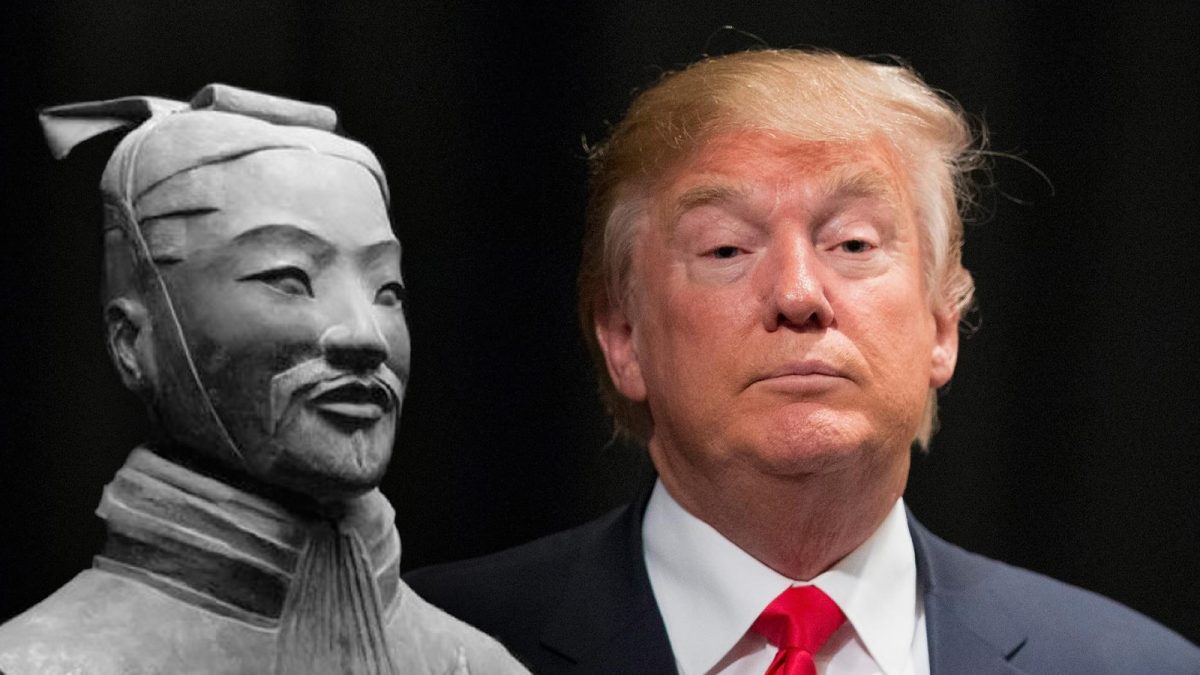- Contact us:
- 03300 535 600
- [email protected]

Recruitment Agency myths debunked
November 21, 2016
Infographic: 5 types of toxic employee (and how to deal with them)
December 5, 2016Our business is people and with that in mind we prefer to stay way out of politics. A place for political commentary this is not.
What we do understand though is that corporate sponsorship, speech writers and multi-million dollar campaigns aside, at the heart of politics is people who, themselves are undertaking careers, all be they highly paid, highly scrutinised and very public.
Politicians, much like the average Joe are just people undertaking careers, they have their own agenda, be it money, power or (hopefully) creating change and improving people’s lives.
We took great interest in the recent presidential campaign in the US and we, like many, were shocked and impressed by Donald Trump and his sudden rise from political outsider to, now, President Elect.

Credit: BBC
But is there more to it? Has the Trump won this election by simply applying a set of ideas used for the last 3000 years?
Crazy as we may sound but institutions from Harvard Law School to RMC Sandhurst have studied the acclaimed novel, The Art of War, penned nearly 2500 years ago. Written by Sun Tzu, a Chinese general, military strategist, and philosopher who lived in ancient China in around 544BC. (Head over to our good friends at Amazon and get your copy HERE)
“The Art of War” focuses on core principals of warfare that have been found over the past 2500 years to hold true, regardles of the time that has passed or the circumstances of their analysis. So much so that the book is studied and reflected upon by those in business, sports and politics. Its narrative on strategy and success are timeless.
When we look at Donald Trump’s unexpected storm to the White House over the course of the 2016 Election campaign, it’s difficult to not draw comparisons of Tzu’s historical text.
- Detail Assessment and Planning (Chinese: 始計,始计) explores the five fundamental factors (the Way, seasons, terrain, leadership, and management) and seven elements that determine the outcomes of military engagements. By thinking, assessing and comparing these points, a commander can calculate his chances of victory. Habitual deviation from these calculations will ensure failure via improper action. The text stresses that war is a very grave matter for the state and must not be commenced without due consideration.
- Waging War (Chinese: 作戰,作战) explains how to understand the economy of warfare and how success requires winning decisive engagements quickly. This section advises that successful military campaigns require limiting the cost of competition and conflict.
Trump’s first speech purposefully called out Mexicans as criminals, drug dealers, and rapists. This lead him to being mocked by the GOP as a “joke candidate”. Trump baited his opponents by doubling down and making Trump’s wall the number one issue of the primary election. His stance on illegal immigration forced all other GOP candidates to start one step back, and for Trump to set the pace moving forward. Trump continued to hold out baits throughout his campaign (Mexico will pay for the wall, will he/won’t he run independent, blood coming out of “wherever”, barring Muslims, Hillary getting schlonged, and now “Islam hates us”) to feign disorder. He then double downs every time, saying things like “No border, no country”, “The wall will be 10 feet higher”, or “bringing in Muslims brings in terrorists”.
- Strategic Attack (Chinese: 謀攻,谋攻) defines the source of strength as unity, not size, and discusses the five factors that are needed to succeed in any war. In order of importance, these critical factors are: Attack, Strategy, Alliances, Army and Cities.
Notice how fast each of Trump’s “wacko” statements are superseded by another? That’s because each time Trump is attacked, his core voters feel attacked. The more his opponents attack him, the more flabbergasted they become in seeing nothing stick. Trump wants to be attacked because he already set his opponents up in a position of weakness right out of the opening gate. His opponents are just playing catch-up, which continually puts them further behind and perceived as “low energy”.
- Disposition of the Army (Chinese: 軍形,军形) explains the importance of defending existing positions until a commander is capable of advancing from those positions in safety. It teaches commanders the importance of recognizing strategic opportunities, and teaches not to create opportunities for the enemy.
Trump knows who he is, and of his opponents, none of them knew Trump. You can see it in what they say about Trump. They liken him to being mentally unstable, a bigot, a racist, a buffoon, or even Hitler. Trump is none of these, and to say he is demonstrates how they had lost before they started. His opponents never took Trump seriously. Ted Cruz described Trump’s voters as “uninformed”. Mitt Romney called Trump’s supporters “played for suckers”. No one figured Trump out, not because he’s too crazy, but because he’s too clever. You can’t just laugh him off.
- Forces (Chinese: 兵勢,兵势) explains the use of creativity and timing in building an army’s momentum.
Trump has been planning this since at least the late 1980s. All he had to do was bide his time and wait for the right political climate. Not even the political party he ran for mattered, that’s why he’s running as a Republican since it’s the easiest path to victory. He has no allegiance to either party, which only serves to benefit his message.
- Weaknesses and Strengths (Chinese: 虛實,虚实) explains how an army’s opportunities come from the openings in the environment caused by the relative weakness of the enemy and how to respond to changes in the fluid battlefield over a given area.
Trump’s greatest strength is in dismantling his opponents. Jeb Bush’s fall from grace was a master stroke by Trump. While Bernie is still fighting (See Chapter IV), Trump has long since dismantled his #1 rival through a continuous barrage of perfect pin prick attacks. You may have missed it, but it was one of the greatest American political maneuverings of all-time.
- Military Maneuvers (Chinese: 軍爭,军争) explains the dangers of direct conflict and how to win those confrontations when they are forced upon the commander.
Trump is no fool. Everyone says “Trump has no plans, no platform”, but everything he has said has been by design. Everything from here on out will be by design. Hillary said: “If I’m running against Trump there’s plenty of time to come up with a plan before the general election”. You cannot plan against Trump. Neither Hillary nor Bernie had a plan. There is no political strategy to beat him.
In the words of Mahatma Gandhi: “First they ignore you, then they laugh at you, then they fight you, then you win.”
And for those of you wondering how the book ends, there are another 6 chapters which hopefully won’t spell out the beginning of the end for the western world over the next four years:
- Variations and Adaptability (Chinese: 九變,九变) focuses on the need for flexibility in an army’s responses. It explains how to respond to shifting circumstances successfully.
- Movement and Development of Troops (Chinese: 行軍,行军) describes the different situations in which an army finds itself as it moves through new enemy territories, and how to respond to these situations. Much of this section focuses on evaluating the intentions of others.
- Terrain (Chinese: 地形) looks at the three general areas of resistance (distance, dangers and barriers) and the six types of ground positions that arise from them. Each of these six field positions offers certain advantages and disadvantages.
- The Nine Battlegrounds (Chinese: 九地) describes the nine common situations (or stages) in a campaign, from scattering to deadly, and the specific focus that a commander will need in order to successfully navigate them.
- Attacking with Fire (Chinese: 火攻) explains the general use of weapons and the specific use of the environment as a weapon. This section examines the five targets for attack, the five types of environmental attack and the appropriate responses to such attacks.
- Intelligence and Espionage (Chinese: 用間,用间) focuses on the importance of developing good information sources, and specifies the five types of intelligence sources and how to best manage each of them.




